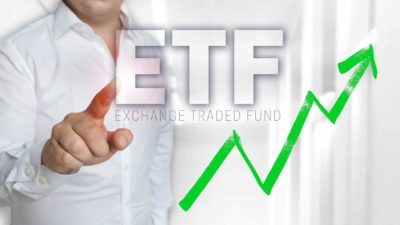Given we are only a few hours away from the end of FY2023, we can say with almost absolute confidence that the Vanguard Australian Shares Index ETF (ASX: VAS) has had an exceptionally strong financial year.
VAS units began FY2023 priced at $83.75 each. Today, they are going for $90.01 at the time of writing. So unless some catastrophic selling event hits the ASX boards in the next couple of hours, the Vanguard Australian Shares ETF is heading for a share price gain of around 7.47% for FY2023.
In addition to this, we need to take into account the four dividend distributions that VAS unitholders have received over FY2023. Investors have enjoyed a total of $4.94 per unit in dividend distributions from this exchange-traded fund (ETF) over the past 12 months.
This equates to a trailing yield of 5.9% at the $83.75 price this ETF started FY2023 at. So all up, we can pencil in a total return for FY2023 of roughly 13.2% for the Vanguard Australian Shares ETF.
Not bad at all.
But as of tomorrow, we will be in a new financial year, FY2024. What might this year hold in store for the Vanguard Australian Shares Index ETF?
What can Vanguard's VAS ETF deliver in FY2024 for ASX investors?
Well, that's a difficult question to answer or to even predict an answer for. The Vanguard Australian Shares ETF, while a single ASX ticker code, represents an underlying investment in around 300 individual companies on the ASX. Thus, its fortunes are determined by the individual fortunes of these 300 shares, collected together.
Predicting what will happen to just a single share over the next 12 months is a difficult task in itself. But predicting the fate of 300? That's a near-impossible ask.
However, we can point out a few things that might make it easier to plot the potential path of VAS units.
Firstly, the VAS ETF may have 300 individual shares in its portfolio. But these are not all given equal weight. The way most index funds work is by apportioning each company's weight and influence in the fund by market capitalisation (or size).
As such, you'll find that the largest ASX 300 share – BHP Group Ltd (ASX: BHP) – currently commands a presence of almost 10% in VAS's portfolio, while its smallest shares, such as Baby Bunting Group Ltd (ASX: BBN), command a weighting of as little as 0.004%.
Thus, a 2% rise for BHP shares over FY2024 is going to have a far bigger impact on the ETF's overall performance than a 200% gain by Baby Bunting.
Look to the banks and miners
So we know that around 9.9% of VAS's portfolio is in BHP shares. Fellow mining giant Rio Tinto Limited (ASX: RIO) commands another 1.84%, while Fortescue Metals Group Limited (ASX: FMG) has 1.51%. Putting those numbers together with Woodside Energy Group Ltd (ASX: WDS)'s 3.02%, and we have more than 16% of the VAS portfolio weighted to these large-cap mining and energy shares.
Then, we have the banks. Together, Commonwealth Bank of Australia (ASX: CBA), Westpac Banking Corp (ASX: WBC), National Australia Bank Ltd (ASX: NAB) and ANZ Group Holdings Ltd (ASX: ANZ) account for a further 17.93% of the VAS portfolio. Macquarie Group Ltd (ASX: MQG) adds another 2.88% to that banking total.
So put simply, VAS's overall performance over the coming financial year will largely hinge on the performance of the ASX banks, mining and energy shares. Thus, investors should look at how these few shares fare next financial year to get a good grasp on how the Vanguard Australian Shares ETF will go.









